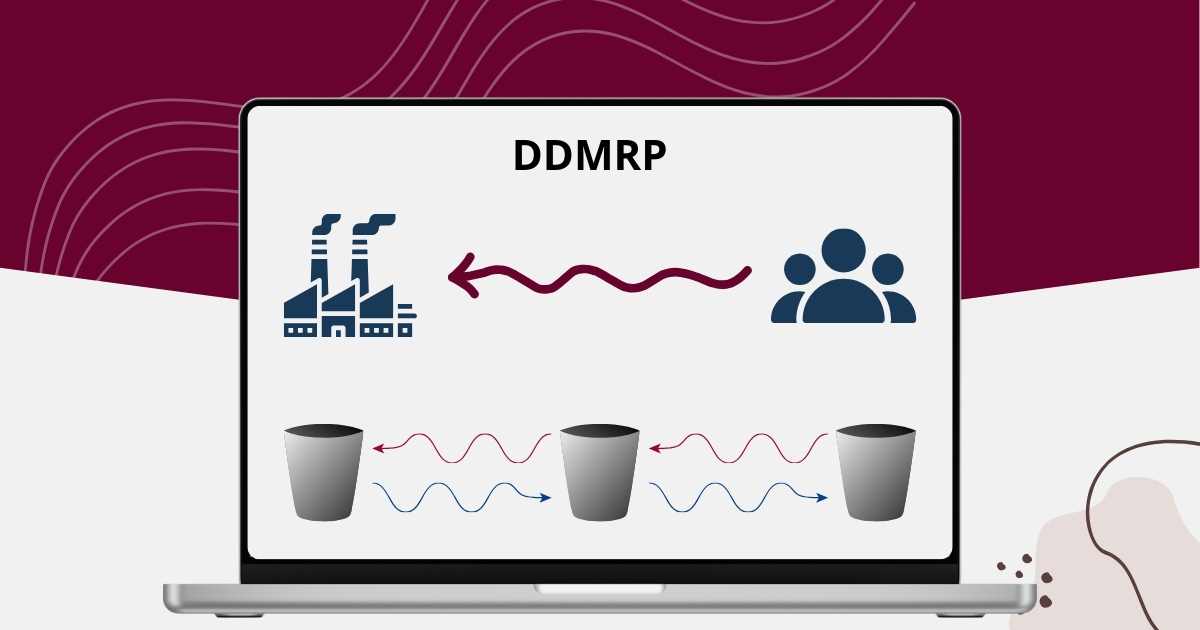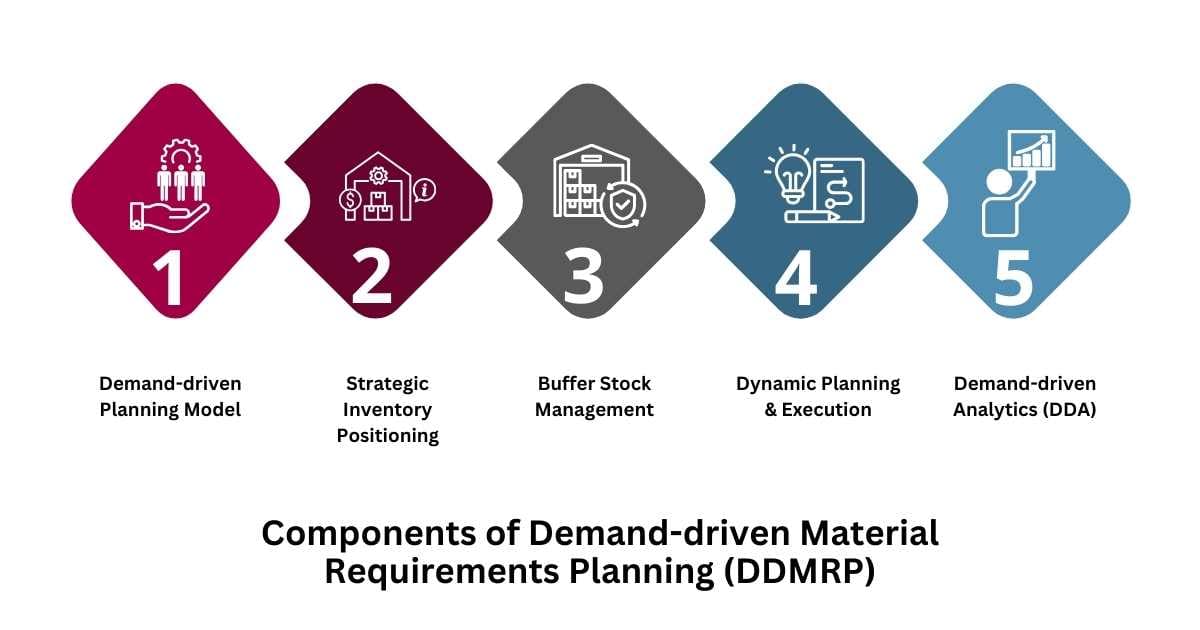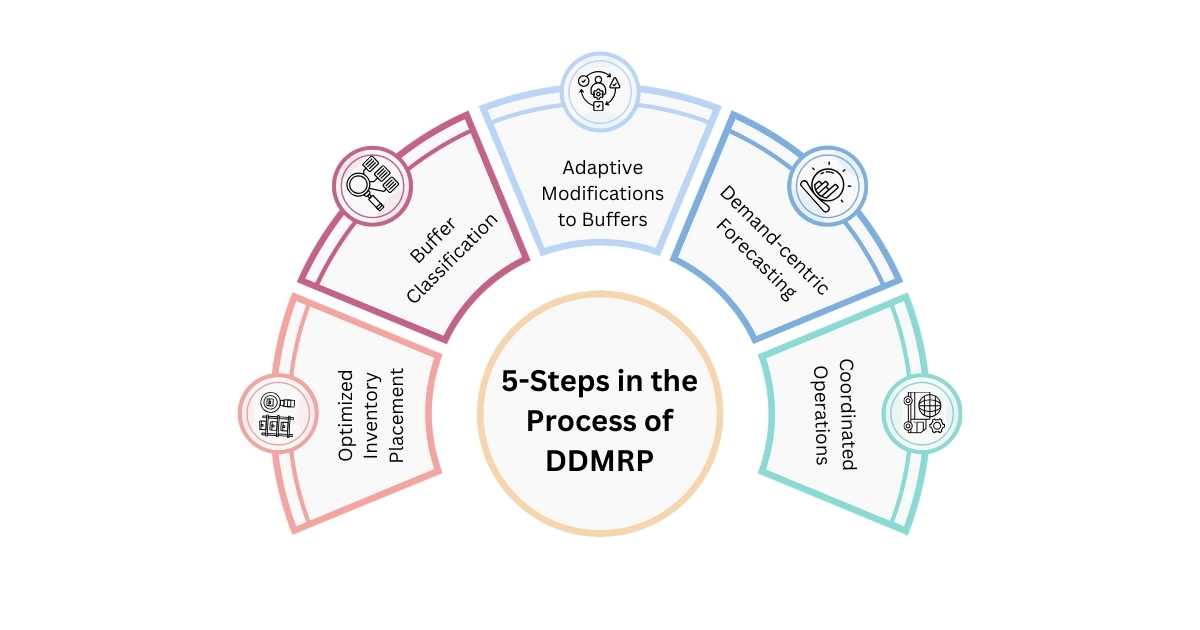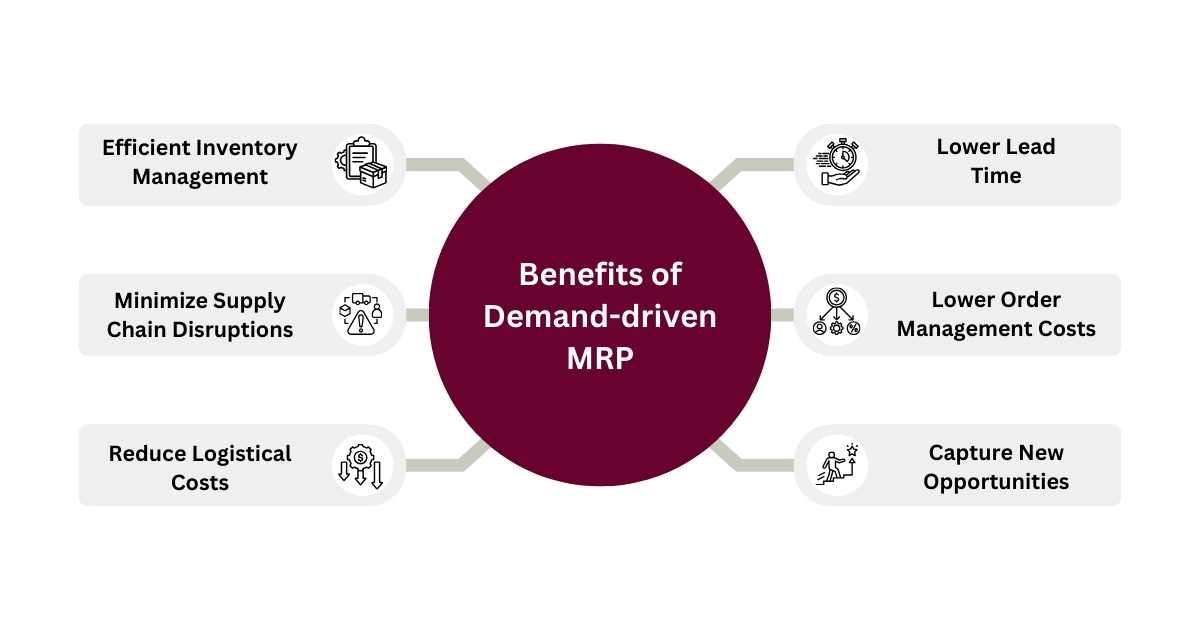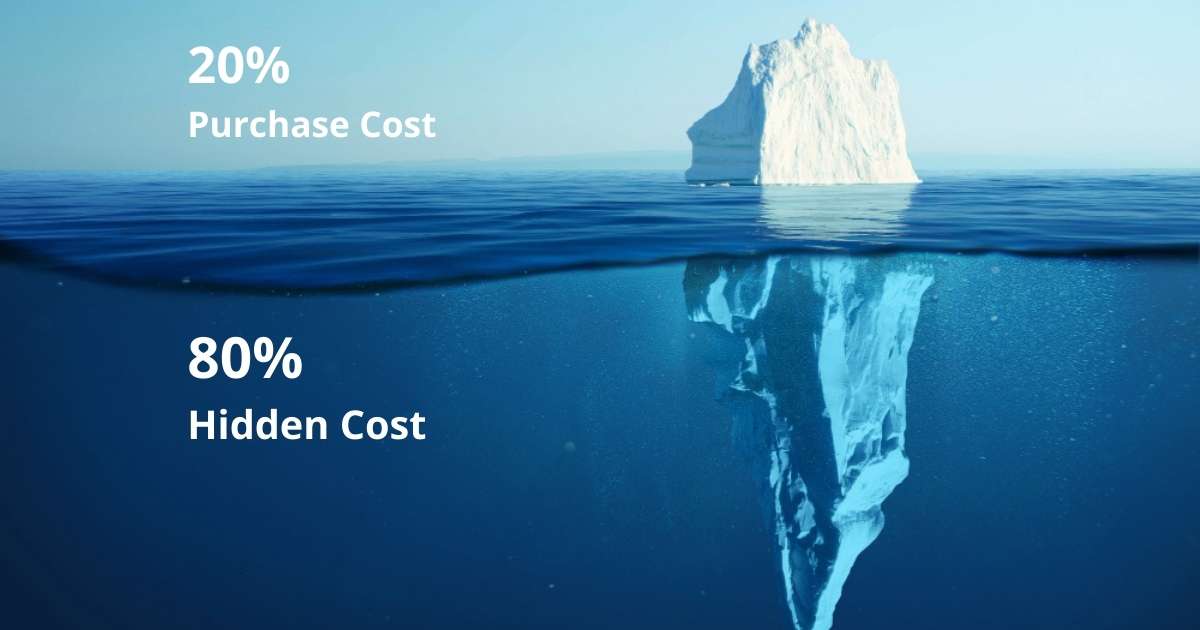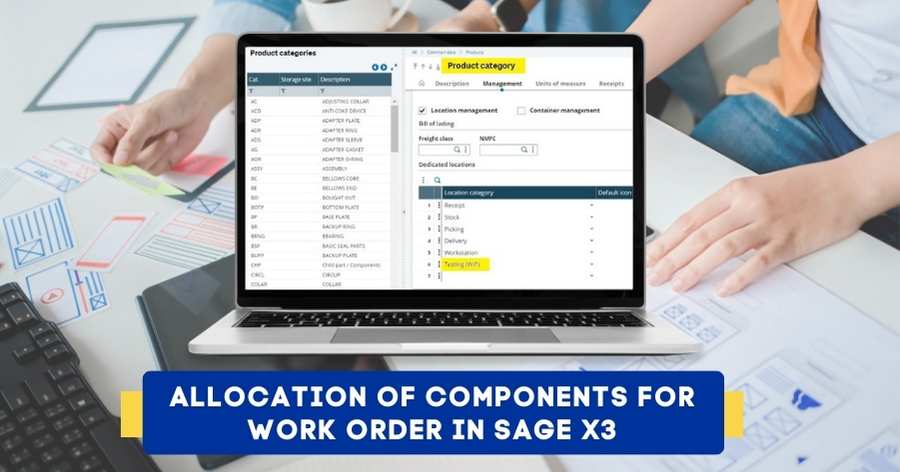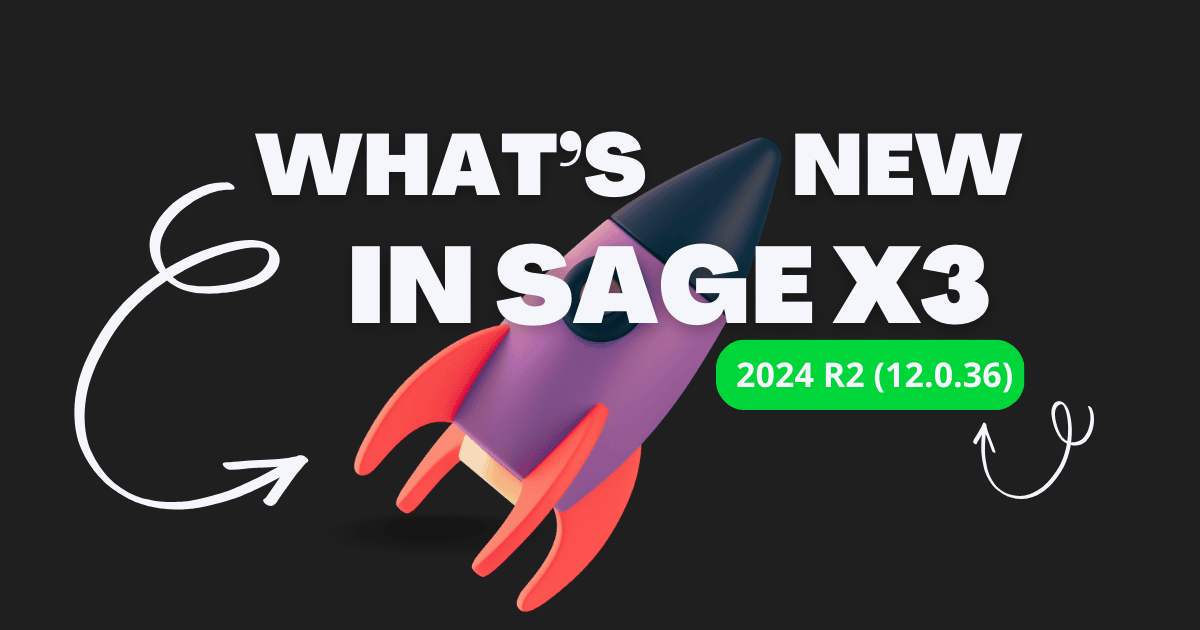What is the Demand Driven Material Requirements Planning (DDMRP)?
Demand Driven Material Requirements Planning (DDMRP) is an evolution of the traditional MRP methodology that acts as a foundational step in planning & execution of the supply chain operations, mitigating potential risks, and bringing efficiency to the replenishment process.
An ERP Software consolidates data from different departments and processes across an organization and supports data-driven decision-making and building a responsive supply chain which are essential aspects of DDMRP.
Demand Driven Material Requirements Planning (DDMRP)
1. Demand-driven Planning Model
This is the first and foremost component that serves as its foundation particularly because it takes the actual demand signals into consideration for designing a strategic inventory positioning plan.
2. Strategic Inventory Positioning
The objective of positioning the Strategic Inventory is to minimize the potential risks of demand spikes and market uncertainty and ensure a continuous supply of inventory to the customers. Inventory Management System uses specific buffers that are located at predetermined points in the supply chain process.
3. Buffer Stock Management
Buffer Stock Management involves making changes to the buffer inventory based on real-time evaluation of the demand for the product. Adjusting Buffer Stock in real-time with the Best ERP Software in India enables companies to avoid surplus inventory, reduce inventory holding costs, and become agile to new market changes.
4. Dynamic Planning and Execution
This involves continuous monitoring of demand signals to make informed decisions pertaining to dynamic planning and execution. Other benefits include lower lead times, reduced bottlenecks, and better supply chain agility.
5. Demand-driven Analytics (DDA)
The DDA is essentially helpful in gauging new trends & patterns through continuous analysis of demand signals. The primary objective of the DDA is to help with the management of buffer inventory management and support superior inventory forecasting.
5-Steps in the Process of Demand Driven Material Requirements Planning (DDMRP)
1. Optimized Inventory Placement
The first step in the process is to place buffers at the appropriate levels in the strategic locations of your supply chain. Such optimized inventory placement using Business Management Software contributes to reduced lead time, smooth movement of materials, and timely order fulfillment.
2. Buffer Classification
The next step is to classify the buffers into different zones based on their core purpose. For example, set green buffers for regular Inventory Replenishment. Set yellow for items requiring typical consumption. Set red buffers to items that are maintained as safety stock.
3. Adaptive Modifications to Buffers
Its buffers are not permanent. You will need to perform adaptive modifications to buffers on a time-to-time basis based on different factors such as spikes or drops in daily consumption and known future occurrences. In short, these buffers need to be aligned with the ever-changing market requirements.
4. Demand-centric Forecasting
This involves making dynamic adjustments based on the changing demand patterns such as seasonal spikes & fluctuations, changing consumer preferences, etc. Businesses adjust their buffering levels to align with new changes and avoid over & under-stocking situations.
5. Coordinated Operations
Businesses collaborate with various stakeholders such as wholesale & retail distributors for seamless communication of real-time market insights. Accordingly, they can prioritize certain stocks of inventory and set up execution alerts.
Key Benefits of Demand Driven Material Requirements Planning (DDMRP)
1. Efficient Inventory Management
Businesses that adopt Demand-driven MRP through proper placement of inventory buffers are less likely to suffer from inventory shortages or surplus. They will be in a better position to maintain sufficient inventory thresholds.
2. Minimize Supply Chain Disruptions
Positioning your inventory buffers in a rightful manner helps minimize disruptions in the core business activities. Companies are able to achieve customer excellence and meet ever-changing business needs with Supply Chain Management Tools.
3. Reduced Logistical Costs
DDMRP helps build supply chain resilience and eliminates the need for urgency in shipping and logistical operations. This, in turn, results in increased profitability and sustainability.
4. Lower Lead Time
One of the other key benefits of ERP is the reduction in lead time. Lower lead time results in improved supply chain responsiveness, higher customer satisfaction, and a positive brand image.
5. Lower Order Management Costs
Automating order management tasks with ERP’s Online Procurement Management System will lower the instances of last-minute rearrangements and short-notice material procurement. Furthermore, your employees will be able to focus on value-adding & productive tasks.
6. Capture New Opportunities
It enables companies to quickly respond to new market trends & changing consumer preferences. It helps reduce unanticipated delays and allows your business to capture new opportunities.
Limitations of DDMRP
1. Upfront Costs
Businesses may incur upfront costs due to higher ERP cost, and the investment into hardware degradation & employee training. However, it shouldn’t be much of an issue with modern Cloud ERP.
2. Implementation Complexities
Unlike MRP, adopting it can be a complex process requiring more time and effort.
3. Limited Standardization Opportunities
Traditional MRP typically offers more standardization and flexibility compared to DDMRP.
4. Employee Resistance
Some employees can be hesitant to change which can affect its efficiency.
What are the Key Differences Between DDMRP & Traditional MRP?
| DDMRP | MRP | |
| Definition | DDMRP is an evolution of the traditional MRP that uses inventory buffers to meet changing market requirements and increase the business’s responsiveness to customer’s needs. | Material Requirements Planning (MRP) is a process of evaluating material requirements to meet production needs and market requirements. |
| Inventory Management Method | Uses dynamic buffers | Uses forecasts & scheduled orders |
| Criteria Used | Takes real-time inventory levels and inventory methods into consideration | Takes into consideration forecasts at and beyond cumulative lead time |
| Suitability | Mostly in volatile markets or times | Mostly in stable & non-volatile markets |
| Flexibility | Highly flexible, especially to demand fluctuations | Less flexible due to dependence on periodic planning cycles |
| Limitations | Complex adjustments of buffer zones. However, not much prone to forecasting errors |
|
Wrapping Up
DDMRP is one of the recent innovations that has transformed the process of inventory management & supply chain and enabled businesses to increase their return on their investment. Modern businesses are moving from the traditional MRP methodology to the DDMRP to reap various benefits.
Sage X3 is an industry-leading solution that supports superior planning and tracking of raw materials, work-in-progress and finished products, and robust integration with e-commerce tools & traditional legacy tools. Deploy it today and benefit from superior inventory planning & forecasting, and combat inventory-specific challenges.
FAQs
1. What is the DDMRP Meaning in Simple Words?
DDMRP meaning in simple words is that it is a technique for material control and replenishment that offers superior benefits than traditional MRP. Unlike MRP, it offers higher business agility and better responsiveness to demand changes. It allows you to combat production disruptions, and inventory-specific challenges (inventory shortages & surpluses) more efficiently.
2. How Do Modern Technological Advancements Benefit Demand Driven Material Requirements Planning (DDMRP)?
Modern technological solutions such as ERP Application play a crucial role in automating inventory-specific processes, and providing real-time insights into the demand trends & patterns. Accordingly, businesses can adjust buffer inventory and build strategies for successful inventory management.
3. Is DDMRP Limited to Only Specific Industries?
No, DDMRP is not limited to only specific industries. On the contrary, it can be adopted in different industries such as manufacturing, retail, and distribution, among others. For example, Manufacturing businesses use a Manufacturing ERP to gain efficiency in the inventory management. Pharmaceutical companies use Pharma ERP Software to gain agility in the supply chain process and improve market responsiveness.
4. Why Should You Choose Demand Driven MRP Methodology Over MRP?
Whether your business should prefer Demand-driven MRP or MRP depends on your specific industry requirements and circumstances. Here’s how it can be helpful:
- It doesn’t offer limited value, especially in highly volatile and uncertain markets, which is a major drawback of Material Requirements Planning (MRP)
- Dynamic buffer management enables businesses to adjust to changing demand patterns
- Your organization is better prepared to manage market uncertainties
- It offers higher efficiency in sectors such as manufacturing, distribution, and retail
- It is useful in improving operational excellence and reducing supply chain bottlenecks
5. What is the Structured Methodology of Demand Driven MRP?
Here’s the structured methodology of DDMRP:
- Buffer Inventory: The first thing is to constantly monitor your inventory levels and maintain buffer zones using efficient stock management techniques.
- Dynamic Replenishment: The next step is to ensure buffer inventory and ensure dynamic replenishment of the old inventory as per the changes in the demand patterns.
- Determine Production Limitations: Develop an approach to identify production constraints and prioritize specific materials over others.
6. What is Material Replenishment?
Material Replenishment (also called Materials Management) is the process of replacing the used materials and components with newer ones to ensure optimum performance and smooth & seamless execution of the supply chain process. The objective of the Material Replenishment process is to ensure the availability of the materials and components before the supply runs out. There are various methods of the Material Replenishment process such as the Demand Method, Top-off Method, Periodic Inventory Replenishment, and Re-order Point Method.
